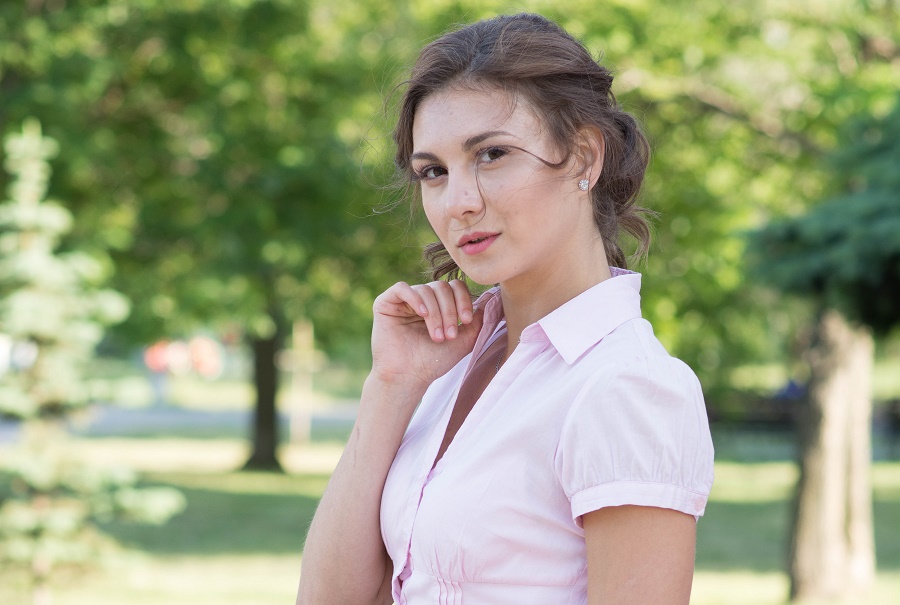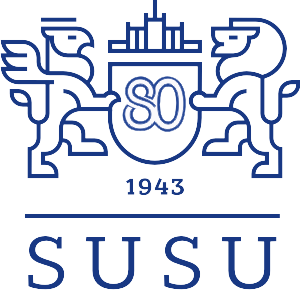Young scientists of South Ural State University annually participate in the UMNIK program, which supports commercially oriented research and technical projects. The program winners receive grants in the amount of 500,000 roubles for the implementation of their projects.
Last year, Mariia Gapicheva, a second-year postgraduate student of the major in Biological Sciences of the SUSU Institute of Sport, Tourism and Service, became the winner of the UMNIK program with a project on the “Development of a System for Monitoring the Posture of Schoolchildren in Real Time with Biofeedback, Using Machine Learning Algorithms”. She spoke about her invention and participation in the competition.

– What are the issues covered in your project?
- Modern children spend a significant amount of time in a sitting position, both at the desk at school and at the screens playing games on tablet computers and smartphones, what affects their posture in a negative way. Long sitting negatively affects the health of the body as a whole, and especially on the spine. A person tries to compensate for the tension in the muscles and ligaments in the body by changing the position. Subsequently, this leads to the fixation of stresses, the consolidation of anatomical shifts and an even greater disturbance of posture. Children entering school already have the pathology of the musculoskeletal system: scoliotic posture, flat feet of varying severity, or osteochondrosis. This problem has become the reason for the development of the project.
– What is the specific feature of your invention?
- It involves the creation of a system consisting of a school chair with weight measurement sensors, a cloud storage of program data that records information about the daily continuous use of the system, which reflects the picture of a modern school child's day, with the aim of its subsequent analysis and suggesting recommendations for the correct formation of posture. A specific feature of this innovation is the implementation of high-precision systems, similar to stabilometry platforms, in everyday household use.
.jpg)
.jpg)
– Why did you decide to take part in the UMNIK program?
– After the idea of developing a “smart” chair appeared, it was necessary to understand whether it was possible to put the idea into action. A review of previously opened projects with a similar purpose was carried out, and their advantages and disadvantages were identified. Then, our own concept was created, and a number of studies were carried out to determine the centre of gravity in a sitting position on the stabilometric platform and registration of the body position in space in the Xsens suit, consisting of 18 accelerometer sensors. It has been reported that the usual position may differ from the correct one. Further, the study of the position of the centre of gravity in different postures was carried out: sitting upright; sitting with your legs under the chair; sitting on your knees; sitting on your knees with the phone; sitting cross-legged (left on top, right on top); leaning back in a chair; sitting with support in front of you (table). And with the help of a neural network used for the analysis, the mathematical formula of each position was revealed. It was made it clear that the implementation of the idea was quite realistic, but the financial support was needed for the assembly of a prototype product, software development and further research work, which could be obtained in case of winning the UMNIK program.
- How did the assessment take place? What was the hardest part?
- The assessment was very exciting. All participants presented their projects in accordance with the time regulations. In the presentation, it was necessary to reveal the idea to the full extent and convey the meaning of the idea, and at the same time observe the time limits, which was probably the most difficult part.
- What further actions did you take after winning the program? What way has your project been progressing since receiving the grant?
- At present, we have carried out the first test of a prototype device and a computer program. We have identified errors in the system at this stage. Now we are assembling an updated layout, in which the magnitude of the measurement error will be minimized. Simultaneously, we are drawing up a patent for the invention.
.jpg)
– What are your plans for the future?
- After assembling a model that meets the GOST parameters and performs all the functions within the limits of permissible errors, we will continue to develop the software, creating algorithms and the program interface. Then a comprehensive test of the system is planned in laboratory conditions as close as possible to the real ones.
- What are you grateful to SUSU and the UMNIK program for?
- First of all, I would like to thank SUSU and Sport Science Research Centre of the Institute of Sport, Tourism and Service for the availability of a modern technical base, within the framework of which it is possible to conduct research of such kind and create an absolutely new device that will be relevant in the modern dynamically developing world of digital technologies. I would also like to say thanks to the UMNIK program for providing support in the development of ideas and the possibility of their implementation. And, of course, a special thanks to those people who are also interested in the development of science and the implementation of such projects, in particular, the Director of the Sport Science Centre Vitalii Epishev and the manager of the competition Daria Kremer.
- What would you wish the students who are just about to participate in the UMNIK program?
- I wish the future contestants of the UMNIK program interesting ideas, courage in setting and solving problems and patience in their systematic implementation!
One should mention that the participation in the UMNIK program is not just a demonstration of scientific inventions, but also an opportunity to win a grant for the implementation of a project. Today, the commercialization of scientific research is the most important indicator of its relevance. It is thanks to participation in the UMNIK program that young researchers have the opportunity to check the relevance of their projects, since the competition is aimed at supporting their commercially oriented research and technical projects.




